A briefing note is a summary document used to convey information about a particular subject to decision-makers.
It is an essential tool employed in many professional settings to give brief but concise information on issues, recommendations, or suggested topics. Most briefing notes are one to two pages long; as such, they need to provide only the necessary information. Because of its importance in decision-making, its content must be balanced and accurate. The author should avoid giving a personal opinion. Instead, the content should be proven with evidence, such as metrics that can be referred to by the recipient.
Such notes are primarily used in the public sector; sometimes, they are used in the legal sector, called legal briefs. They can be used to provide updates on particular situations, seek clarification on a policy, project, or program, and update others on the progress of specific deliverables or milestones of a project.
Depending on why they were written, they contain talking points, issues analysis, or project updates. The author should only convey the required information in the appropriate format. Most departments provide guidelines to the author on preparing the briefs; this promotes smooth communication between the author and the recipient.
Key Briefing Note: Templates and Examples
Briefing notes are vital documents. Therefore, they must be prepared carefully to ensure all the details are captured. You may find it challenging to prepare one from scratch, especially if it is a task you have to do continuously. Briefing note templates can be helpful for you. We have provided templates of briefing notes that will help you understand how to create yours.
Below are templates and examples, and you can edit these templates to suit your needs:
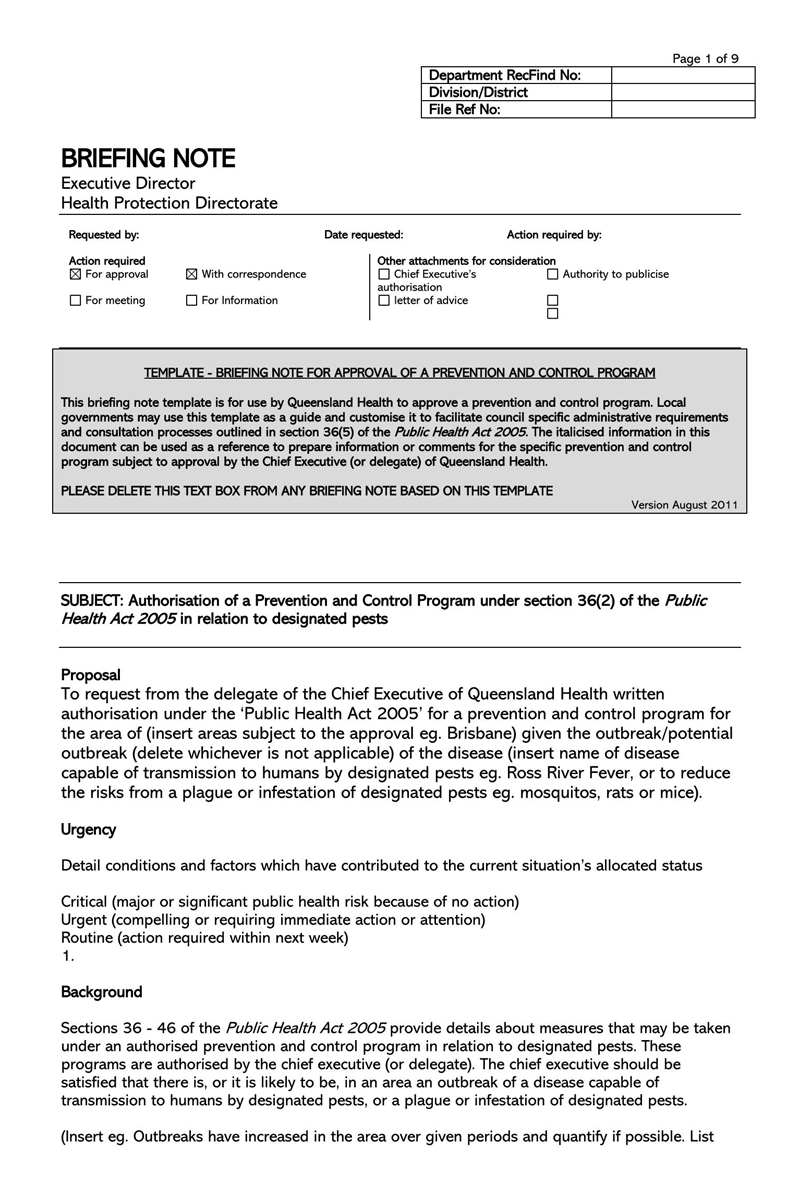
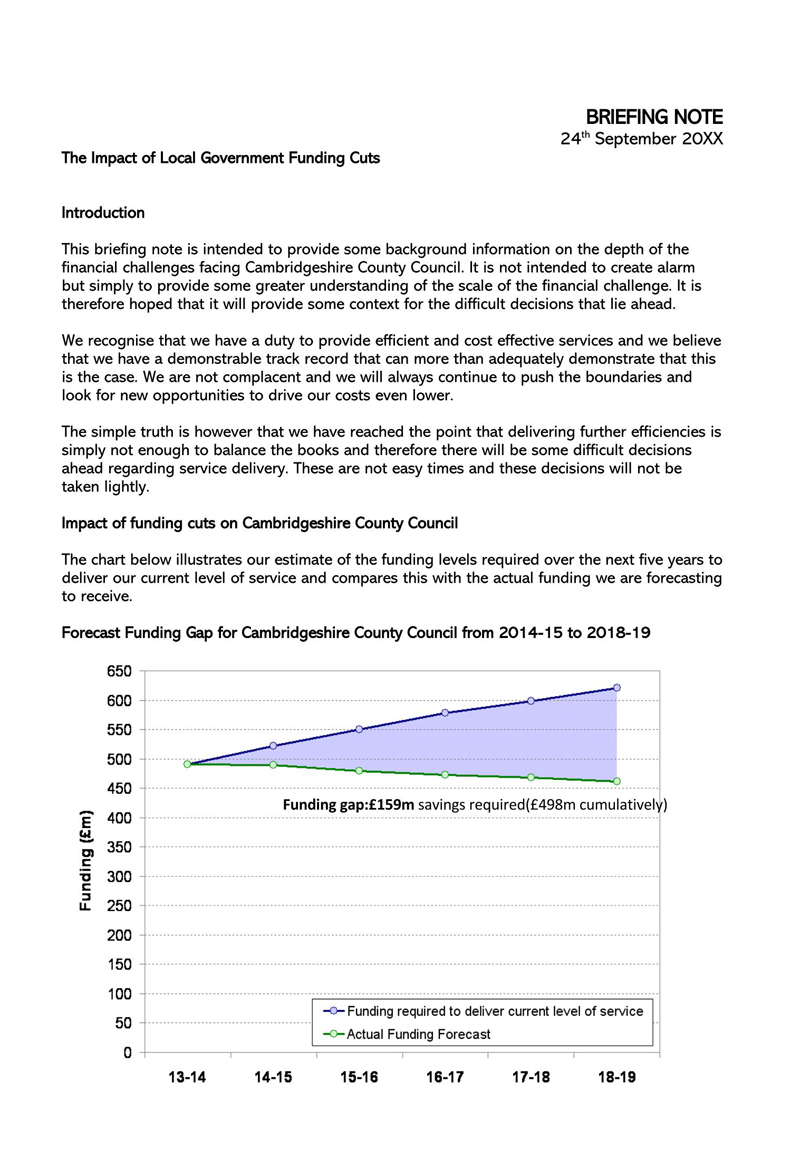
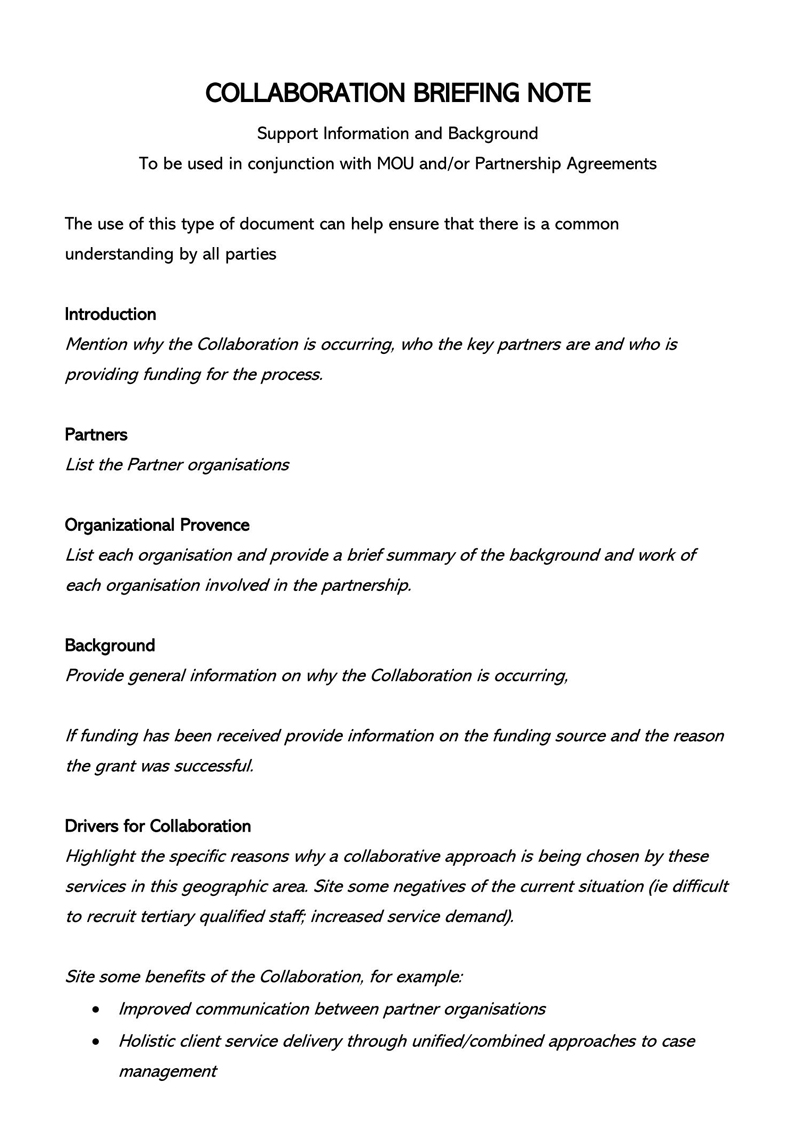
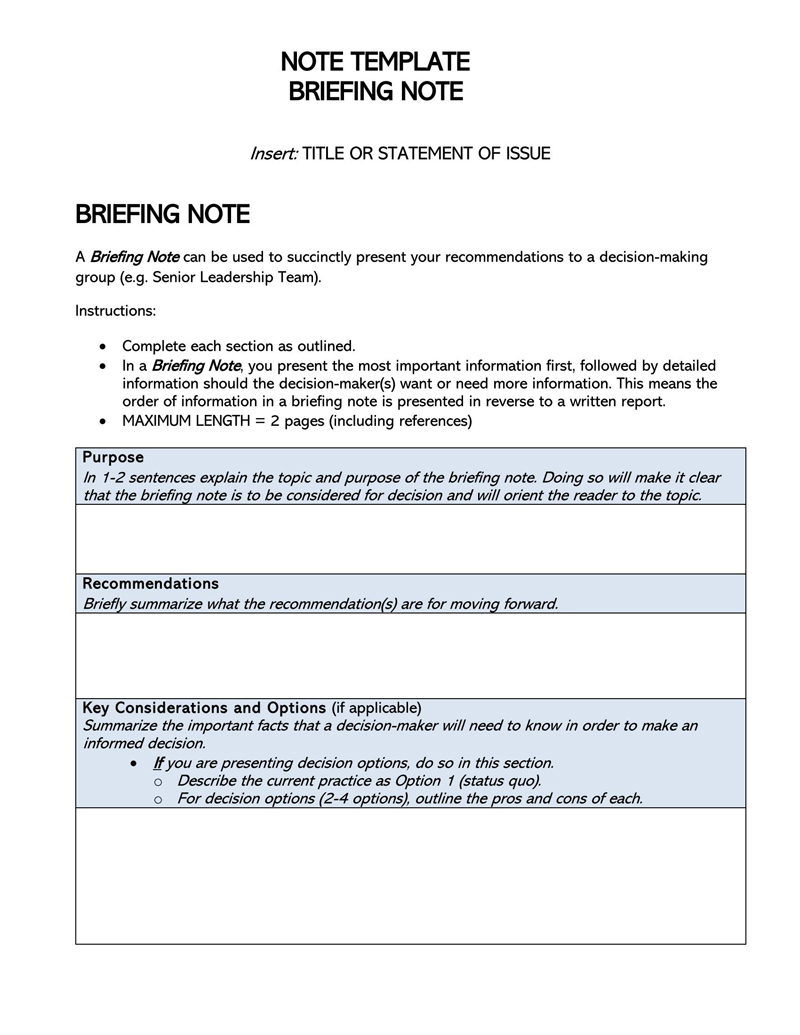
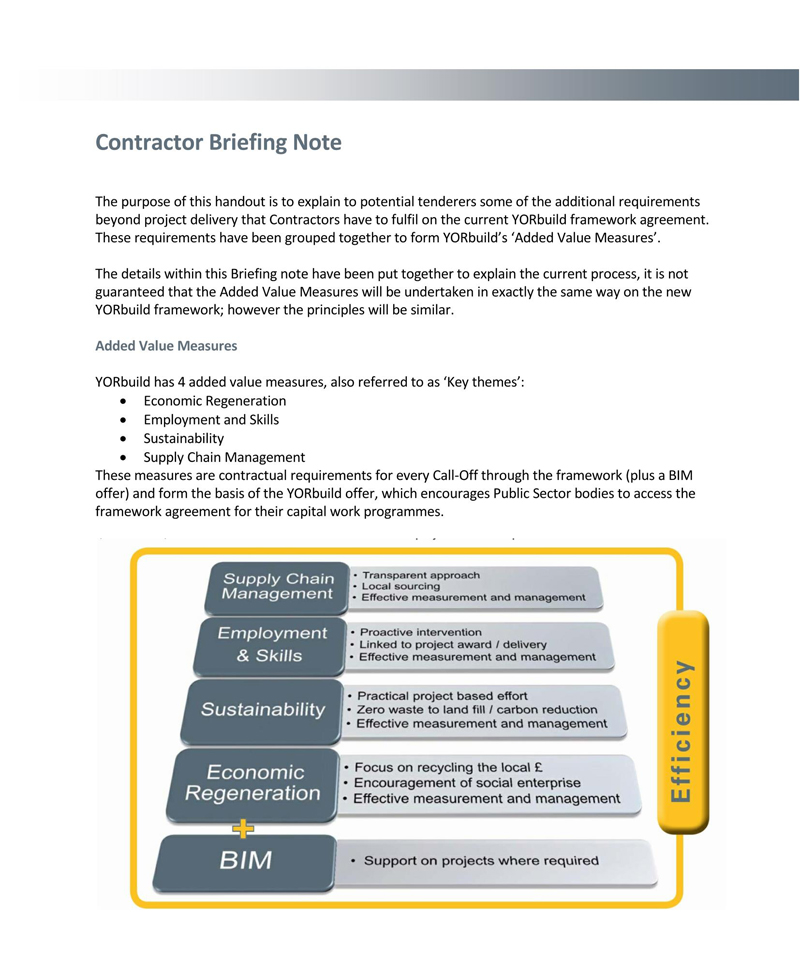
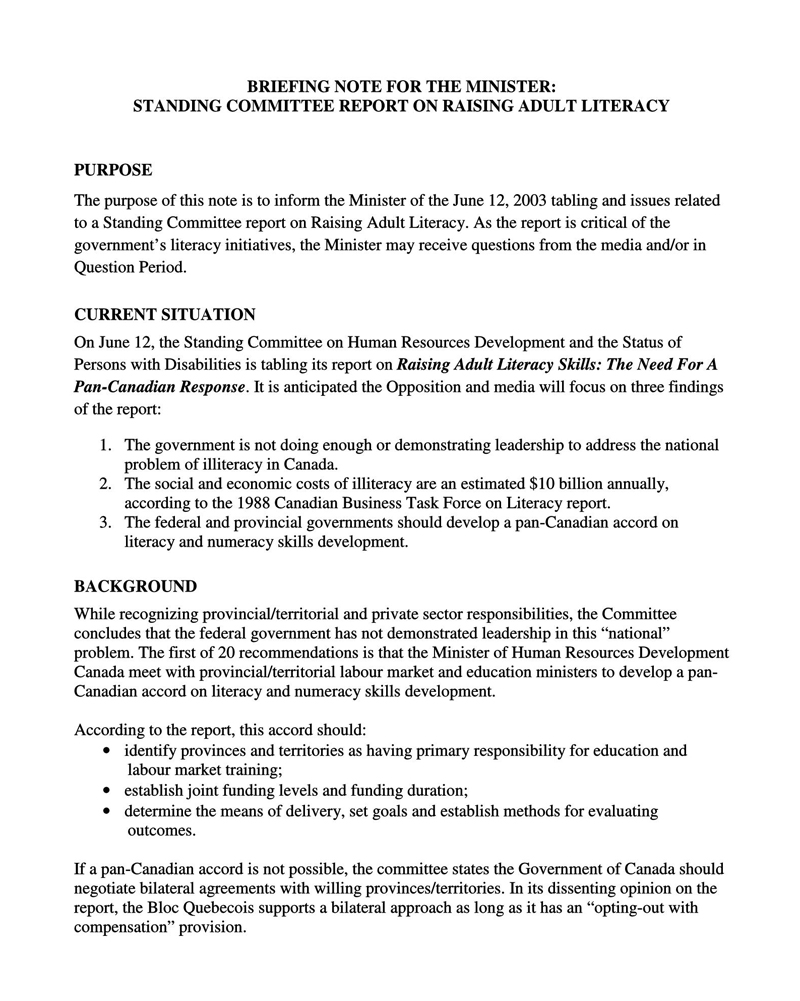
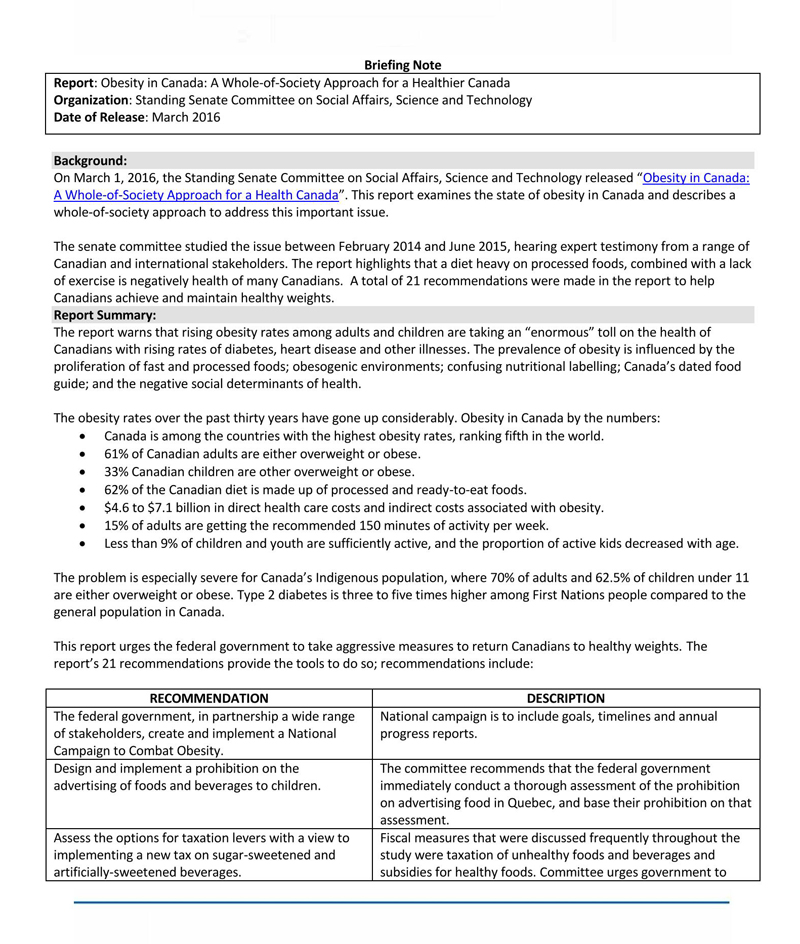
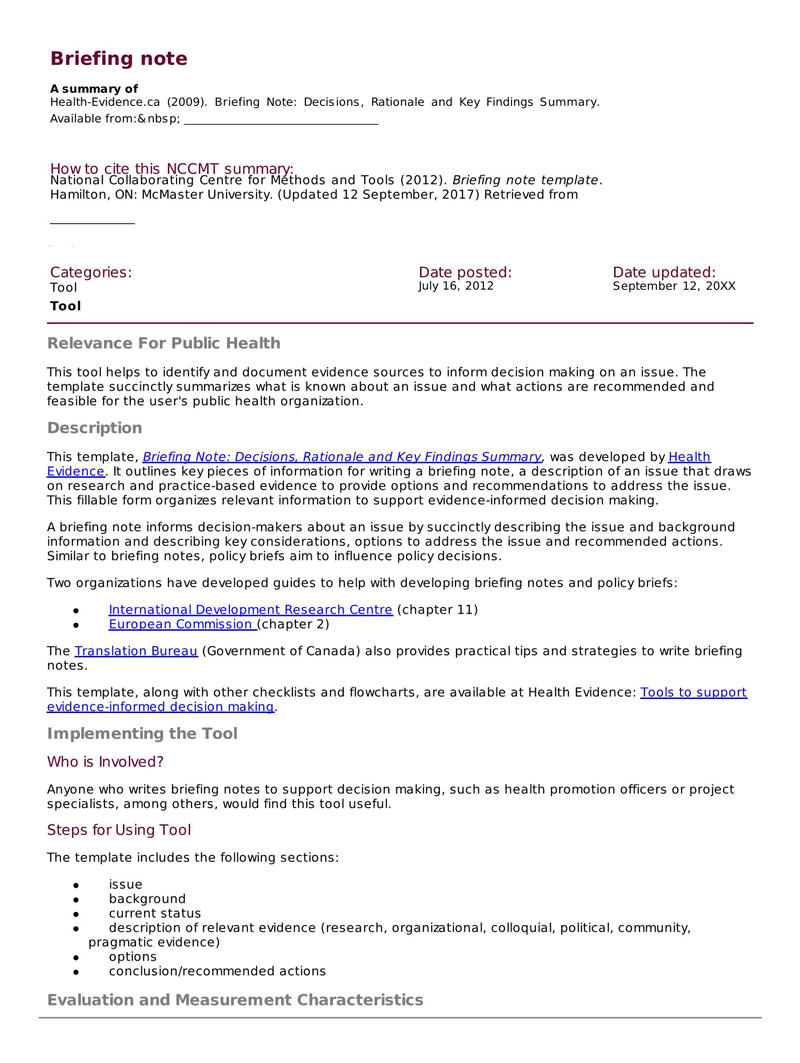
What is the Purpose of Making Briefing Notes?
Wherever they are used, briefing notes are important strategic communication tools. Since they are commonly used in the public sector, they can be used to achieve many objectives.
First, briefing notes can be used as decision notes; in such cases, the author analyses the issue and provides a selection of decisions that can be made depending on the circumstances. Second, they can be used to provide recommendations on actions or processes that need to be undertaken to achieve set objectives.
Third, these notes can provide information on current or contested issues. In this case, they help the recipient understand why an issue is prevalent or may need to be addressed. You may be required to write a note with overlapping purposes.
EXAMPLE
An information note that provides recommendations. You should ensure that the briefing note you provide fulfils the purpose for which it was required.
Ask Yourself Some Prewriting Questions
Before writing your briefing note, you should consider all the relevant factors, including the information that needs to be provided. You should also consider the format to use, the guidelines provided, and the preferred writing style.
You may ask yourself the questions below:
- What is the reason for writing the note?
- Who is the intended recipient?
- What information should be included?
- What is the required format?
- How can I determine the audience’s needs?
- How much detail should I provide on each issue?
- What is the context under which the note was requested?
- What approach is best in providing the recommendations?
Content of Briefing Note
This note should be comprehensive. It should provide the necessary information according to the instructions issued. The content of a briefing note varies depending on its purpose; some briefs provide information on topics, while others provide information to help the recipient make a decision.
The following are some essential sections of a briefing note:
Title
The title of the note should be simple but descriptive. It should allow the recipient to deduce the note’s content before reading it. Most titles are written in bold at the top of the note. The document’s title should state what purpose the note serves, whether it is to inform or request approval.
Date of preparation
The date of preparation is the date the note was submitted. It is important to indicate this date for record-keeping, especially where the note submission is subject to a timeline.
The author’s name and role should be included at the bottom of the document; this is important for identification so that the author can be identified if the recipient requires clarification.
Intended reader
You should mention the intended reader of the brief; this information is essential when the brief is circulated in different departments. Further, other individuals may edit the brief; identifying the intended recipient allows them to tailor the content to the reader.
Consultations
Before completing the brief, you should indicate the consultants that gave their advice on the brief. Their inclusion verifies that the information provided results from proper research and can be used to make effective decisions.
Communication strategy
A communication strategy describes how the brief will be circulated among the involved parties. You should provide this strategy in brief to streamline the process of sharing it among the stakeholders.
Purpose/issue
You should begin your brief by giving an issue or a purpose statement. An issue statement is preferred for briefs that provide information on a current matter. Purpose statements are preferred for briefs that provide recommendations or requests for approvals. When writing your brief, ensure the first statement discusses why the document was written.
Background
The background section should be used to provide the context of the briefing note. It should state the origin of the matter, whether it was remedied, what the progress is and what caused the issue to be the subject of the brief. By reading the background, the reader should understand the issue’s history and why the department or organization should be involved.
Current status
The current status of a matter should be an accurate account of the stakeholders involved and the plans underway in addressing a matter. In addition, it should provide more context as an extension of the background of the issue.
Speaking points
Speaking points are a summary of the issues being addressed in the note. They should state the considerations and key elements of the issue and how it will be resolved. When writing the speaking points, it is recommended that you address the issues in a manner allowing the issues to flow from one point to the other. These points are written in bullet format.
Key information
Key information is pertinent to the issue’s origin and current situation; this includes unique information that, if utilised, will result in the objectives of the note being achieved. It should be backed by evidence and facts. All the information should be summarised clearly and verified; the provision of false information could be detrimental to the purpose of the briefing note.
Recommendation
Once you have analyzed the issues and provided the necessary information, you should provide recommendations on the addressed issue. They should include the advantages and disadvantages of each option in an unbiased context. It is advisable to begin with the best option and provide the alternatives after that.
Conclusion
After presenting the above information, you must conclude the note by providing a general summary. You should begin by stating the issue, its origin, your analysis, and the recommendations.
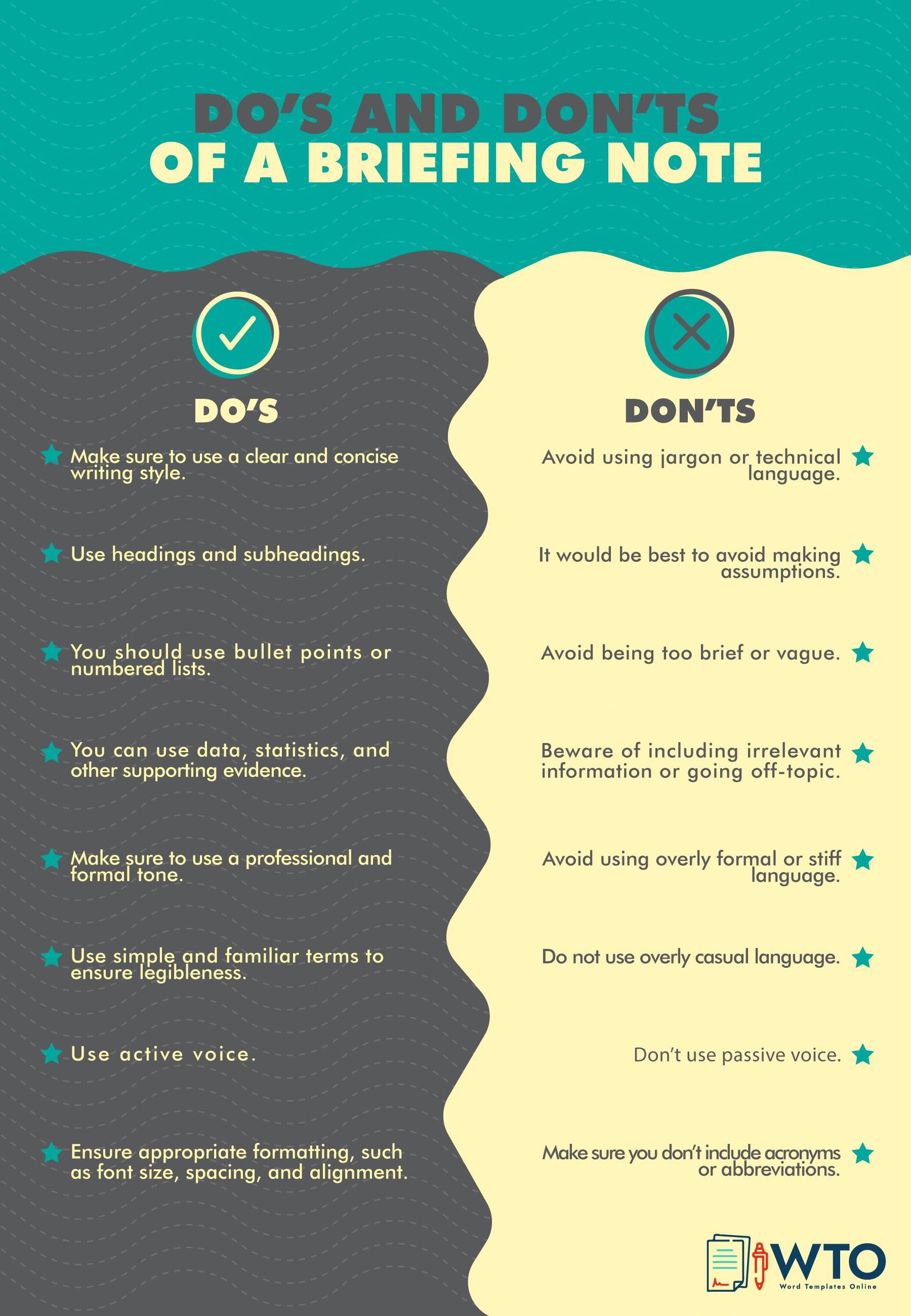
Key Tips for Writing Effective Briefing Notes
While there is no standard way of writing this note, some practices have proven effective in preparing effective notes.
These practices include the following:
Keep it brief
Briefing notes are often used when the reader expects a summary of the issues; as such, you should ensure your brief is concise. Most briefs are a maximum of two pages long. In addition, you can improve your conciseness by eliminating unnecessary words and using short sentences.
Avoid speculation
Briefs are based on facts and evidence. The information you provide should be verified from research and the advice of consultants. It is essential to avoid speculation and unverified information as it might negatively impact the decision that will be made.
Format in a proper way
Most organizations provide a format for their briefing notes; some standard rules may apply where there is none. For example, a brief should be between one and two pages long. It should provide relevant information in precise wording and short sentences. Further, any abbreviations should be mentioned at the beginning of the brief. You should also avoid using complex words and vocabulary where it is not needed.
Avoid informal writing style
A brief is a formal document that will often be used for official purposes; as such, it should not be written in informal language. You should use short sentences and organize your points into consecutive ideas. You should use plain English and avoid using unnecessary descriptive terms.
Do quality control by proofreading
The depth of research and presentation of your document will judge the quality of the information you give. Therefore, you should proofread your work and correct the mistakes you identify. You should also review to check the flow of the content. Additionally, you should ensure the information provided can be verified and that no information is omitted. You can invite your friend or colleague to proofread the document; they may identify mistakes you have failed to correct.
Final Words
Before you begin writing your briefing note, you should plan by reading the instructions and analysing the context to determine how you will write your note to achieve the desired outcome. By planning, you can compile a list of the consultants whose advice you will need and the material you might use to take content. You should also consult the instructions to check whether you have a timeline to submit your note.
Once you finish writing your brief, you should prepare a checklist for assessment and quality control. A checklist will help you understand whether your brief fulfils the requirements you had set in your plan. It may include a review of the communication objectives, the tone of your note, formatting, and the language. Beyond the content, other aspects of your note, such as its presentation, should be simple and professional.












